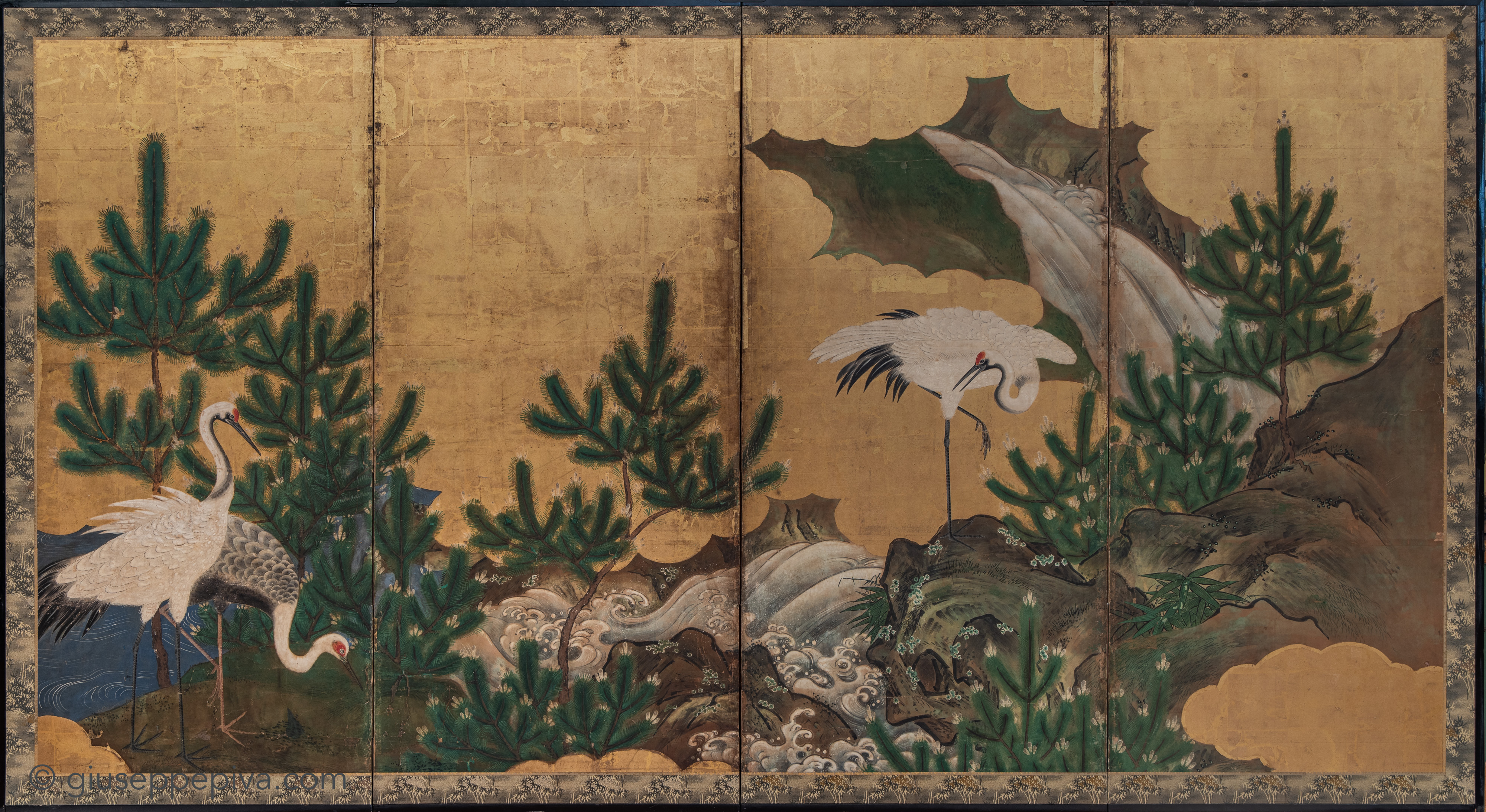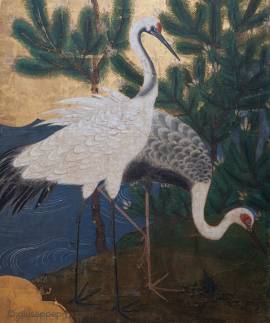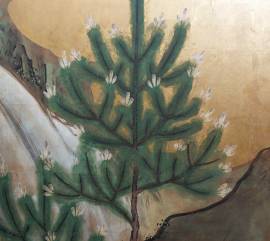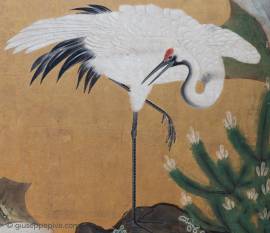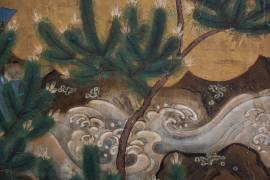A four panel screen with cranes and young pines
Kanō school, early Edo period (1615-1868)
17th century
Four-folds screen; gold background
140 by 255 cm
The scene, in the typical style of the Kanō artists, depicts three cranes. The birds are surrounded by pine branches, sharp rocks and agitated waters, whose lines accentuate the dynamism and strength of the whole composition. The poses of the animals reflect the scene’s mood: very dynamic for the crane near the waterfall and more relaxed for the pair standing on the left on a plane ground by calm waters.
Pines (matsu) often occur in Japanese art as a symbol of longevity. In this screen, the pines are young (wakamatsu), reinforcing the symbolic meaning linked to longevity. It is a very rare subject, whose fundamental reference is the decoration of a room in the Tosaburai at Nijō castle in Kyoto, the waiting room for visiting daimyos, painted in 1626 by artists of the Kanō school.
The depicted cranes (tsuru) belong to different species: two are those commonly called "Japanese crane", with white plumage and red forehead, and one is a "white-necked crane", with grey plumage and eyes surrounded in red. The crane is also a well-known symbol of longevity and for this reason it is often associated with pine.
Price band: 10,000€ - 25,000€
Screen for sale. Price on application. Please include item stock number:1607
Inventory Nr: 1607
Info works
Copyright © 2016 - giuseppe piva - VAT: 05104180962


